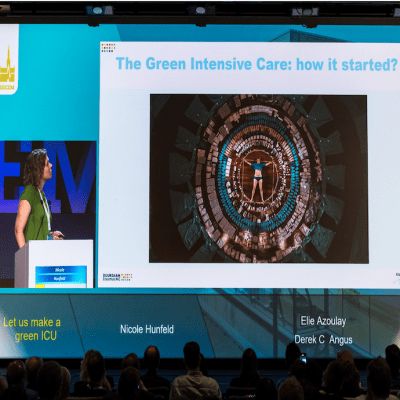To prevent blood clots during therapeutic hypothermia, scientists have developed what may be the first drug activated by cool temperatures and turned off by warm ones, according to research presented at the American Heart Association's Arteriosclerosis, Thrombosis and Vascular Biology Annual Conference 2010.
"We used biotechnology to create a modern intelligent drug," said Karlheinz Peter, M.D., Ph.D., leading author of the study and associate director of Baker IDI Heart & Diabetes Institute in Melbourne, Australia. "This drug is tailored for preventing clots during therapeutic hypothermia and for minimizing bleeding problems especially after rewarming."
Doctors use therapeutic hypothermia when the heart temporarily stops beating either spontaneously (cardiac arrest) or during cardiovascular surgery. In this procedure, doctors lower a patient's internal body temperature to prevent organ injury, including brain damage, by reducing metabolic rate and oxygen requirements.
The new drug works only at cooler temperatures by inhibiting the activity of platelets, which are cells that bind together to stop bleeding. In mouse and human blood samples, researchers demonstrated that the experimental drug bound to platelets and prevented them from clumping together at cool temperatures (22º C or 71.6º F). When the researchers raised the temperature to normal (37º C or 98.6º F), the anti-platelet action stopped.
"Our idea was to develop a reagent that is highly active at the moment it is really needed ─ when patients are at low temperature ─ and that loses its function when it is no longer needed ─ when patients are rewarmed," Peter said.
Peter and his collaborators at Baker and Emory University in Atlanta, Ga., used recombinant DNA technology to fuse a temperature-dependent protein with a protein that inhibits platelet activity. The first part of this new protein is similar to the protein elastin, which gives skin and other organs their flexibility and is known to change shape in response to temperature changes. The second, antibody portion of this combined protein inhibits platelet activity by blocking the receptors that normally enable these cells to clot together to heal an injury.
For centuries, physicians have recognized therapeutic hypothermia's benefits, but its use in cardiac patients is relatively recent. In the 1950s, doctors began using the treatment for cardiac surgery, such as valve and bypass surgery. Also, hypothermia is often used in surgical repair of structural cardiac defects in infants and children. However, cardiac hypothermic surgery is associated with a substantial risk of clotting.
To prevent this serious complication, anti-clotting medication is a standard part of therapeutic hypothermia. The drawback is that the effects of current anti-clotting medicines continue even after body temperature is raised to a normal level, which sometimes leads to excessive post-surgical bleeding, researchers said. In contrast, the new combined protein not only inhibited blood clot formation during cooling but also prevented bleeding problems after rewarming.
After extensive clinical studies, the American Heart Association in October 2002 recommended that therapeutic hypothermia also be used to treat selected patients who have suffered cardiac arrest. Using cooling blankets, ice packs or other methods, doctors lower a patient's internal body temperature for 12 to 24 hours. This highly effective therapy can increase survival rate and decrease long-term disability, but it can sometimes cause blood clots.
To assure that the novel temperature-dependent drug also protects patients subjected to this type of
therapeutic hypothermia used for the protection of the brain in patients after cardiocirculatory arrest, further studies are needed to determine the extent of platelet inhibition at temperatures such as 32º C to 34ºC (89.6 º F to 93.2 º F), Peter said.
Co-authors are: Denijal Topcic, Ph.D.; Carolyn A. Haller, Ph.D; Wookhyun Kim, Ph.D.; Andreas Straub, M.D.; Fu Jia, M.D.; and Elliot L. Chaikof, M.D., Ph.D. Author disclosures are on the abstract.
The Australian Research Council and the Australian National Health and Medical Research Council funded the study.
Adapted from materials provided by American Heart Association, via EurekAlert!, a service of AAAS.






















